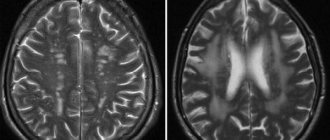The Great Ego
Attitudes towards personality in Soviet and Western schools of psychology were under pressure from ideology. In the USSR, psychology had to provide evidence of the correctness of the ideas of collectivism.
In Europe and America, psychologists were in demand as private and corporate consultants. Therefore, much more research has been devoted to personality and its self-identification.
Several main directions have emerged:
- Psychoanalysis.
- Behaviorism.
- Cognitivism.
- Symbolic interactionism.
The existence of different schools and competition between them reflects the complexity of the problem. A person turns to a psychotherapist and psychoanalyst when he realizes that something is “wrong” in his life. Loss of self-identity causes discomfort and stress.
Each person is individual. Differences in approaches to diagnosis and therapy allow everyone to find a specialist whose methods are most effective in a particular situation.
Types of social identity
The concept of “identity” is quite widely used in modern humanities and social sciences. It should be understood that this quality is not initially characteristic of the individual. Identity is a person’s relationship to himself within the world. It is formed and develops over time under conditions of interaction.
Scientists separately consider ethnic, professional, political, regional, age and gender identity. Their types differ, since the role of each of them in the personality structure is different. It completely depends on temporary and situational factors, such as place of residence, occupation, age, education, worldview, etc.
Ethnic identity is activated or weakened in the process of changing a person's attitude towards the national community to which he belongs. Most often, it is not formed by “attributing” any national attribute to others. As a rule, its manifestation occurs in the process of awareness and individual self-determination.
For example, if a person's surname has obvious ethnic characteristics, this does not mean that an identity exists. It is not always sufficient to identify a person as a member of the relevant nationality. However, it can be found even in a society characterized by obvious ethnic contradictions.
Gender identity is formed in early childhood during the process of human biological development. Apparently, this is determined not only by biological, but also by social factors. Thus, non-traditional sexual orientation (sexual identity) is a very difficult phenomenon to understand. This is due to the fact that in modern society there is an active struggle to determine the norms and conditions of such identity.
This problem cannot be solved separately within the framework of psychology, since it requires a systemic analysis. To do this, it is necessary to take into account the opinions of various specialists, including cultural scientists, biologists, psychiatrists and lawyers. The individual and the group must find a compromise, since an unconventional social identity can cause discomfort for many members of society.
Psychoanalysis
Freud viewed the process of self-identification as two opposing processes. Acceptance of what creates a feeling of comfort (“anaclitic” identification). And protection from everything frightening and incomprehensible (“identification with the aggressor”).
The illustration shows Freud's personality structure. Ego - subconsciously, Id - the sphere of receiving pleasure, Super-Ego - self-restraint (ethics, morality).
Freud put forward a theory of five stages of human development. He associated them with the predominance of physiological reactions in different periods of childhood. According to his theory, too strong a fixation on the functions of the body at the beginning of life leads to disturbances in the self-identification of a mature personality.
Erik Erikson, a follower of Freud, proposed a theory of 8 stages of psychosocial development, from infancy to old age. It has become widespread, since in its main provisions it corresponds to “common sense” and the personal experience of the majority.
Infancy . Building trust in the mother and the environment. According to observations of children in families and shelters, it is important for infants to have a person with whom emotional contact is established. Children deprived of communication begin to lag behind in development even with proper care and feeding. In adulthood, it is difficult for them to communicate and identify themselves as an independent, self-sufficient person.
Early childhood up to 3 years . According to Freud, this is the anal period when the child becomes aware of control over bowel movements. According to Erikson, at this age independence and awareness of physical capabilities are formed. The child masters the first self-service skills: eating, dressing, etc. Limiting activity at this age leads to weakness of will.
Game age from 3 to 6 years . The child actively explores the world, masters systems of norms and restrictions. There is an awareness of guilt for violating prohibitions, shame, pride, initiative in games and communication. The Super-Ego is formed. According to Freud, this is a component of personality responsible for norms of behavior and moral attitudes. At the level of everyday experience, it has long been known that strict prohibitions or permissiveness in childhood form a person’s distorted ideas about himself.
School age up to 12 years . The period of the first encounter with society without parental support. Acquiring communication skills, awareness of one’s status in the hierarchy of peers. The discrepancy between the expectations of adults and the real successes of the child forms an inferiority complex. Its manifestations in adulthood become a reason for turning to psychotherapists.
Adolescence . Physiological and hormonal changes occur. The teenager seeks to leave his family and socialize in society. Since in the modern world a teenager is considered a child and continues to depend financially on his parents, the process gives rise to conflicts. Identification of oneself among others, the formation of independent goals and desires are postponed. This is expressed in infantilism, which must be overcome in maturity.
The period of youth lasts up to 25 years . A person’s ability to start a family depends on how the previous stages of personality formation were completed. The lack of experience of emotional intimacy in a previous life leads to loneliness, disappointment, and psychological problems.
Maturity . Lasts until 60-65 years. A person realizes himself in a profession and other forms of social life. Self-identification as a parent is very important. Throughout the entire period of maturity, a person experiences various crises of self-identification. This serves as a source of development (career and professional growth, change of activity, creativity).
Old age . Exhaustion of resources, acceptance of oneself and one’s role in society and family.
E. Erikson saw normal personality development in the consistent overcoming of crises of transition from one psychosocial stage to the next. All tasks of the period must be completed. Otherwise, an adult remains in the “child”, “teenager” stage. His priority becomes the search for emotional attachment or his social group. According to Erikson, identity is a sign of a mature personality.
Division of identification into types
To more fully understand what identification is, you need to understand its types. They depend on the area in which the event is being held.
There are four main types of identification in forensics:
- according to a display that has received a material fixation, for example, a tread imprint on the road;
- to establish the ownership of a part of an object, for example, a piece of fabric, a fragment of a knife;
- recognition from an image preserved in memory, for example, from a witness;
- comparison of previously described signs with the signs of the allegedly found object.
It is worth paying special attention to the types of identification that are used for a variety of products. Thus, thanks to consumer identification, unusable goods do not enter the market. Product-batch identification is considered very difficult, as it must determine the manufacturer of a given batch of goods. Identification is also carried out based on whether a product belongs to a specific assortment; it is called assortment identification. In addition, there is a qualitative one, which determines the quality of the product, and a varietal one, with the help of which defects are identified and the grade of the product is determined. Special identification is carried out in order to identify products that are prohibited for sale, for example, genetically modified ones.
To determine identity, visual types of identification are mainly used (although there are others). The most common of them is when they compare the subject’s appearance and his image in the photo on the identity document.
Personal identification in behaviorism
Behaviorism – practical application and development of I. Pavlov’s ideas. Human behavior is considered as a system of reactions to the environment. Personal identification and conscious behavior in accordance with the chosen strategy are considered the highest human development.
Most people don't try to understand themselves as individuals. They live and act in accordance with subconscious programs learned in early childhood through copying. Their social identification comes down to the assimilation of patterns of behavior and stereotypes accepted in their environment. Social approval is a form of reinforcement.
A purely materialistic, almost biological approach to the motivation of human actions caused rejection in the scientific community. But the application of behaviorism methods in pedagogy, marketing and propaganda gives the expected result.
Identification applied to various goods
In the field of trade, identification of goods is one of the most important actions necessary to determine their compliance with the submitted documentation, which reflects basic information about the product, as well as with available samples. During the identification process, goods are marked and labeled.
Using identification, the authenticity of goods is identified and confirmed. And labeling and drawing up certain documentation prevents illegal products from entering the market.
Identification of goods is carried out at each stage of production. There are microbiological, chemical-physical and organoleptic methods of identifying goods.
Using a microbiological method, the presence of harmful microorganisms and microparticles in a product is determined. The physico-chemical method allows you to determine the properties of the product. To carry it out, special devices and equipment are used. Although organoleptic methods have some degree of subjectivity, they are very quick and are also used for identification.
Cognitive approach
In contrast to behaviorism, the study of personality draws an analogy between the brain and a computer. The theory was developed at the intersection of psychology, cybernetics and linguistics. It is believed that all impressions from interactions with the outside world are structured. So-called “constructs”—models of reality—are formed. Each person has his own set of constructs and connections between them. They regulate behavior and self-identity.
From cognitive psychology, the expression “cognitive dissonance” has come into widespread use. This is the discrepancy between objective reality and the individual's personal experience.
In cognitivism, the theory of social identity (SIT) has been developed. For any individual, socialization is associated with the process of categorization, or comparison of one’s qualities with the qualities of representatives of a group. Such a comparison is only possible through communication. Interpersonal and intergroup interaction is considered as a cognitive process. As a result, the number of behavioral models that simplify social adaptation is expanding.
Variety of methods used for identification
To identify certain objects, various identification methods are used.
The simplest method of unique names has been known since ancient times. It is thanks to him that cities, countries, planets, and so on have their special names.
Many objects that we encounter in everyday life have their own numbers. Their assignment is due to the method of identification using the numbers that make up the number, which is one of the most widely used.
To identify products or documentation, conventional designation methods are widely used, which are divided into mnemonic, classification and mnemonic classification.
To systematize various objects and simplify the collection of necessary information about them, the classification method is used.
If the features of an object are identified according to certain standards described in regulatory or technical documents, then the reference identification method is used.
If a certain object is identified by describing its qualities, characteristics, dimensions, then the descriptive method is used.
And if you add a link to regulatory documentation to the description, then this identification method will be called descriptive-referential.
Symbolic interactionism
Adherents of this paradigm in sociology believe that a person reacts not to direct stimuli, but to their images. Language is considered the main symbolic system. “Understanding” by group members of each other without words is explained by the fact that the primary interaction is gesture and facial expressions.
Since a person cannot form and develop outside of society, he self-realizes in the process of interactions, “interactions.” Personality manifests itself only as a result of communications. The exchange of people’s ideas about themselves and others forms a “primary group” with the closest and most effective connections.
The personality is in constant dynamics: assessing the situation, its correlation with familiar symbols and in the interaction or exchange of symbols.
Identification as a mechanism for accumulating and preserving information about a person
Personal identification occurs by determining a person’s identity by a group of characteristics when comparing them.
To identify a person, it is necessary to establish complete passport data. This includes the last name, first name and patronymic, date and place of birth. An identification code and other data are also used, depending on the requirements of the identifying party.
There are various identification methods. This may be a number that is issued for life (TIN). A number that may be changed due to changes in last name or other data. Or there may be several numbers; their presence together will facilitate identification.
Identification can be centralized when all data is stored at the highest level. Can be distributed when information is stored where the subject is registered. In this case, information can be exchanged. With a hierarchical type of identification, information is available in all authorities from lower to higher.
Social identification in the modern world
Realizing and identifying himself, a person necessarily correlates his “I” with any group. This identification can be a source of positive emotions. Awareness of belonging to a low-status group generates feelings of shame. For example, it is not prestigious to be “poor”, “poorly dressed”, “weak”.
Reluctance to belong to a low-status group is expressed in several ways:
- Active protest, aggression towards representatives of other groups, demonstration of “bad” qualities.
- Assimilation, the desire to outwardly resemble representatives of social strata with a higher status.
- The search for compromises, borrowing the features of another group or culture, while demanding to “respect” certain norms of behavior of one’s social stratum.
Self-identification is based on a common mentality (civilizational identity). These are the same traditions and norms for large groups of people, learned in childhood. People with the same mentality understand each other more easily, even if they speak different languages.
But in second place is ethnicity . It becomes a problem for representatives of nations and peoples who are considered or consider themselves disadvantaged.
The third most important is age identification . This is a problem for teenagers, since the desire to occupy a higher position as an “adult” does not correspond to life experience. For older people, awareness of their age is painful because it is associated with the loss of the achievements of a previous life.
What is identification: definitions
What is this? Identification is in psychology the process of an individual’s imitation of another subject, group, fictional character (image); the process of self-identification of an individual with a group, image, or another person. Identification is, in simple words, the search for an answer to the question “Am I the same as who?”
The term was introduced by S. Freud. The psychologist examined the phenomenon within the framework of psychoanalysis. The first thing Freud studied was the child’s identification with one of the parents. At the same time, the researcher came to the conclusion that identification is always based on fear and anxiety. By identifying with a stronger, more authoritative person, the individual reduces the discomfort he experiences.
However, a little later the author identified several types of identification:
- primary (child with mother);
- identification with a loved one (“I want to be like you”);
- identification with an unloved person (a defense mechanism of the psyche, “you will not offend someone like yourself”);
- identification in the perception of community (“stand in my place”, “what would he do”, “what would he think”).
Over time, the concept began to be used in a broader sense. According to him, personal identification is imitation, emotional fusion with someone. However, some psychologists still adhere to the psychoanalytic theory, arguing that it is a defense mechanism developed by evolution that helps in adaptation. Let's take a closer look at modern definitions and find out what identification means in psychology.
The meaning of the word "identification"
The name is derived from the Latin indentifico, which means “to identify.” Identification is the establishment of correspondence, similarity between two or more objects.
Identification concept
According to definitions from various dictionaries, identification is:
- identification, recognition of objects (encyclopedic dictionary);
- comparison with a standard, identification for litigation (business dictionary);
- subconscious identification of oneself with another person, often a parent (psychiatric dictionary);
- a psychological defense mechanism in which an individual becomes like his offender and identifies himself with him (psychological dictionary);
- a protective mechanism of the psyche, in which a weak person adopts the experience and features of a strong person (psychological dictionary).
In sociology, identification is understood as the process of an individual identifying himself with some group, another person. This is clearly visible in the example of youth subcultures. An individual copies the external attributes, behavior, values, beliefs, and interests of the group.











